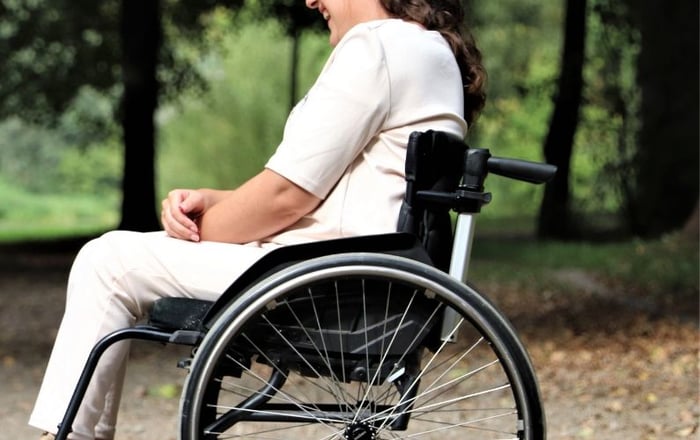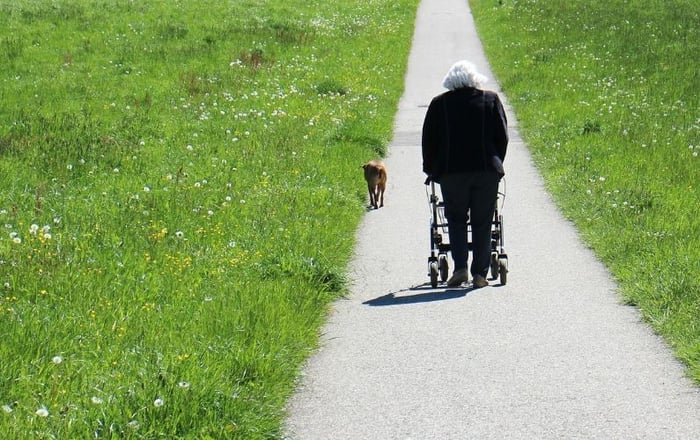Receiving a diagnosis that involves limited mobility can be devastating. You're likely to grieve the loss of your mobility, which is completely normal. But, knowing that you can still be active and learn to adjust can help to shift your mindset when you're ready.
Having a growth mindset is one way you can help yourself to participate in walker and wheelchair exercises. A growth mindset means that you adopt the belief that you are able to learn and adapt. You recognize that you'll need to learn new skills and overcome new challenges.
Limited mobility doesn't need to hold you back. You can still be healthy and fit. Change your life and improve your health by regularly doing walker and wheelchair exercises.
Completing these exercises can create a new sense of vitality in your life. Read on to learn 8 walker and wheelchair exercises to improve your physical state.
Health and Wellness Are Yours: 8 Walker and Wheelchair Exercises
Before we launch into the exercises, it's beneficial to create exercise goals and to speak with your doctor. Gain medical clearance before beginning any new exercise routine. Have your doctor approve the use of these exercises in advance.
You may also want to read Staying Active this Summer with Mobility Aids, offering tips for an active summer, and Exercising Safely with Limited Mobility, where we provide guidance on safe workouts for those with restricted mobility
You should also ask your doctor if assistance would be beneficial. For example, from a physical therapist, personal trainer, or occupational therapist. Lastly, always stretch, do a warm-up, and do a cooldown.
Explore the following walker and wheelchair exercises to add to your daily routine.
1. Squats
Squats help to strengthen your lower body. People who use walkers will find squats useful to improve their overall agility. Squats will help them to get in and out of chairs and beds with ease.
Use your walker to balance yourself. If you need additional balance use a wall and/or ask for a spot. Keep your back straight, bend your legs, and lower your hips.
A walker will allow you to complete a partial squat. Only go as low as your walker and body allow. Keep in mind your current level of physical fitness as well to avoid injury.
2. Get Moving
Walking or riding in your wheelchair is a great form of exercise. Both of these activities are cardio exercises. They help to keep your heart healthy and to burn calories.
Use your walker to walk around on a regular basis. If you're not used to walking around or operating your wheelchair, then start small. Create a small goal of talking a few steps or going down the hall.
Once you've accomplished that goal, add more to your cardio routine.
3. Water Aerobics
Water exercises are great full-body workouts individuals with limited mobility can enjoy. Water exercises are easy on your joints while also providing extra resistance for strength training.
There are also wheelchair and walker water aerobics classes you can take. Sign up for one of these classes or hire a private instructor to show you the ropes.
4. Sit and Stand
Sitting and standing can be difficult for people with limited mobility. By including this activity into your exercise routine, you can strengthen your body while practicing technique.
Simply sit and stand using your walker. If you have a wheelchair, practice getting in and out of your wheelchair if you are able.
5. Walker Lifts
Training your core and upper body is essential for people with limited mobility. Strengthening these areas helps to avoid injuries such as slips and falls.
Walker lifts also help to improve your balance. A skill that is also imperative for limiting injuries.
Before completing this exercise, make sure that you have enough balance without using your walker. If you do, then gently lift your walker one to two inches off the ground. Lower your walker slowly and then repeat.
6. Body Lifts
If you're using a wheelchair, you can do a variation of the walker lift exercise. But, instead of lifting your chair, you will lift your upper body. To start, make sure you apply the brakes on your wheelchair.
Then, place your hands on each armrest of your chair. Push yourself up and then lower yourself down slowly. Complete as many repetitions as you can without overexerting yourself.
7. Seated Body Conditioning
Upper body conditioning is useful for preparing to operate a walker or a wheelchair. They are also useful for improving the execution of walker and wheelchair exercises.
Some upper body workouts to try to include arm raises, bicep curls, and overhead presses. Punching the air is also a great cardio exercise.
Lower body workouts to include in your routine are rapid leg lifts, thigh squeezes using a medicine ball, and knee raises.
8. Stretches
Stretching and flexibility help to improve everyone's mobility and to reduce aches and pains. Stretching can relieve tension and can help the muscles to prepare for a workout. In essence, stretching helps to loosen your body, avoid injury, and improve your workout experience.
Most stretching exercises can be completed in a sitting or lying position. Always stretch the area you're targeting in your workout to prepare your body. For the upper body, stretch your arms to the sky, across your body, and behind your back, if you are able.
To stretch your legs, lay down on your back. Attempt to reach toward your toes if you are able. Grab behind your thigh and hug your leg as close to your stomach as possible, then slowly release.
You can also do gentle yoga and Tai Chi exercises by adapting the poses to meet your needs.
Walker and Wheelchair Exercises: Gaining Support
Support is essential to anyone beginning a new exercise routine. These walker and wheelchair exercises will improve your health, but having support will help you to stick to your routine.
Ask your friends, family, and/or a health professional to hold you accountable for your goals. Speak with them at least once a week to update them on your progress. When you're ready, and if your doctor approves, increase your goals.
Want to invest in a high-quality wheelchair to start your new exercise routine? Check out our product selection to find the best wheelchair for you.










